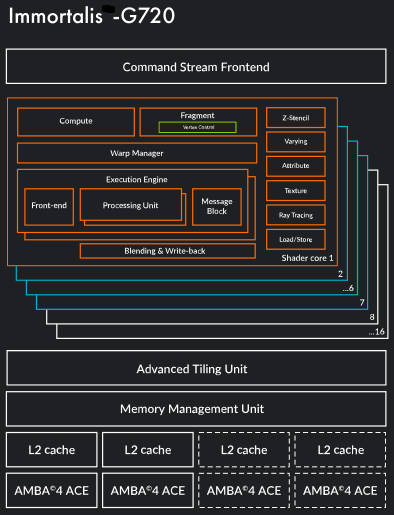
Amid all the talk about AI replacing creative workers in the future, there’s perhaps not enough talk about the creative tools it’s replacing here in the present: Instagram influencers brainstorming post ideas with group chats, notes apps, crumpled paper and scattered Post-It notes.
With AI taking over the role of idea generators, the creative process is evolving rapidly. That’s because, for all their weaknesses, when it comes to the tasks associated with the sometimes-brutal work of idea-generation, AI applications have already saved creators from the headache-inducing glare of the dreaded blank page.
Luca Schaefer-Charlton, a Canadian TikToker with 6.7 million followers(opens in a new tab), Johnny Valentine, an American TikToker with 7.3 million followers(opens in a new tab), and Essex-born reality TV star Chloe Veitch(opens in a new tab) were all in London for an event when their management decided it’d be a good idea for the three to collaborate.
Schaefer-Charlton and Valentine have an online following that Veitch could benefit from, and Veitch has relevancy that Schaefer-Charlton and Valentine could benefit from.
“It just made a ton of sense,” Jeff Duncan, CEO of the talent agency Ingenuity Live that represents all three of the influencers, told Mashable.
He set them up in a WhatsApp chat and suggested that they “build some content together.” Schaefer-Charlton, Valentine, and Veitch were all down, but they didn’t know what kind of content they should make together.
A lawyer used ChatGPT for legal filing. The chatbot cited nonexistent cases it just made up
“I sat there in front of the WhatsApp channel for a few minutes, and I was trying to come up with some concepts that made sense,” Duncan said. But he felt he was wasting time creating these concepts himself — and took it to ChatGPT instead.
Duncan gave ChatGPT some context about all three creators and asked the generative AI tech to come up with social media content for the three creators to make, focusing on the results: “bridging followers from one creator to the next, and creating viral strategies that will have the highest chance of getting the most views.” The 20-or-so ideas ChatGPT sent him — like working with musical buskers to create new TikTok videos or competing in a street art scavenger hunt — were “awesome.” He sent the ideas to Schaefer-Charlton, Valentine, and Veitch, and the trio used the ChatGPT responses to craft multiple videos for their channels.
“That was a perfect example of using AI in order to make the content strategy smarter and give some ideas to them,” Duncan said. “If you can give artificial intelligence some level of understanding as to what you’re trying to accomplish, the content creators can use it in order to make themselves more effective in what they’re trying to do.”
Influencers and their teams are already using generative AI — a type of artificial intelligence that produces content, like ChatGPT and Midjourney. It has the potential to revolutionize the creator economy and its two million full-time creators and 46 million amateurs(opens in a new tab). Generative AI can be an incredibly helpful — and powerful — tool. For now, creators and creator marketers use it predominantly for creative ideation, like Duncan did for his talent.
How creators use generative AI
There are two main types of generative AI that are being used online right now: text-focused, and visual-focused. More text-focused generative AI, like ChatGPT, is used exactly for what Duncan did with Schaefer-Charlton, Valentine, and Veitch. Using image generators to create ideas might seem like a less obvious use of AI, but they’re actually making a huge impact.
Jordan Harrod, a research scientist, graduate student at Harvard and MIT, and creator who runs a YouTube channel(opens in a new tab) about artificial intelligence, told Mashable that she’s been using Midjourney and other visual-focused generative AI tools to help her ideate on an image idea that she doesn’t have the ability to draw herself. She doesn’t use the entire Midjourney image, but will use it as a starting point. There are also generative AI tools like Opus(opens in a new tab) that will take a longer video — like a YouTube video — and turn it into shorter clips for TikTok or Instagram Reels.
What not to share with ChatGPT if you use it for work
“The thing that I see not being very useful is a lot of the discourse around generating content wholesale. Like ‘I’m never going to film a video again because I’m just gonna generate the whole thing using AI and it’s gonna go viral,'” Harrod joked. “First of all, I haven’t seen a lot of tools that are actually good at that. Second of all, if you’re going into the creative space, you’re doing it because you have ideas and you want to create them, and you’re looking for tools that can help you do that. Not because you’re trying to just generate as much content time as physically possible.”
Dave Wiskus, the founder and CEO of Nebula(opens in a new tab), a streaming service for creators, told Mashable that this tech has the potential to make content creation more accessible. Beyond idea creation, Wiskus sees use of ChatGPT and Midjourney to be a set of creative starter tools that will set creators up for success if they have raw talent that may once not have been put to use.
“Autotune didn’t destroy singing: It only made people with a different kind of creativity more likely to find a good way to express that creativity,” Wiskus said. “Photoshop didn’t ruin photography. It just made it so that more people could get into photography; it made photography more accessible so that we could get better art from more artists. I think that AI, at least as we understand these tools today, will give the same effect.”
The simple answer to how generative AI affects the creator economy, or any job, really, is that it saves you time. None of these tools are perfect, yet. That’s why Duncan encourages his clients to use it for everything they can — from finding recipes to getting movie recommendations — to get to know what it does well and what it doesn’t do well.
“For now, my suggestion to every content creator has been: You have to become the master of what currently exists,” Duncan said. “Because you don’t want to start from ground zero when the new product comes out.”
The pitfalls
Currently, generative AI is still pretty stupid. It’s not great at producing complex videos, streamlining the process of creator identification, writing anything well on the first go, or even coming up with completely original ideas. And, of course, there are copyright issues. And there’s a fear that, because so many creators are being encouraged to use AI, they’ll all have the same creative ideas.
Rem Darbinyan, who works both in the AI world and the influencer marketing world as the CEO of SmartClick(opens in a new tab), an AI and machine learning solutions provider, and Viral Mango(opens in a new tab), a micro- and nano-influencer marketing platform, told Mashable that generative AI is an “amazing tool” for creators, but if everyone starts using it in similar ways, it could affect the way creators come up with new ideas.
“I’m expecting that it’s gonna be some kind of erosion of human creativity,” Darbinyan said. He worries that instead of exercising our creative muscles, we’ll start using tools like ChatGPT as a crutch. “Over time, the more we rely on AI, the less creative we’re going to become and more we’re going to rely on AI to generate ideas.”
Darbinyan added that, of course, we don’t know for sure. These tools are incredibly new, but creativity is simply something we should consider. Wiskus, for his part, isn’t entirely sure that this kind of AI actually will hurt human creativity — it might just change it.
“The most likely scenario isn’t that AI destroys human creativity,” Wiskus said. “It’s going to be that humans — creative humans — find new ways to use new tools to express that creativity.”
The future of generative AI and the creator economy
It’s pretty inarguable that generative AI is having a strong impact on the creator economy today, but it’s unclear if its impact will grow stronger or stay stagnant. Generative AI, in the way we know and use it today, is relatively new. ChatGPT was only officially launched on November 30, 2022, the data that powers it is only updated through 2021, and, as OpenAI admits(opens in a new tab), it has limitations including “social biases, hallucinations, and adversarial prompts.” With each new update, those limitations will likely decrease.
Despite the potential drawbacks, using generative AI saves time, opens up creators to new ideas and approaches, and, at its core, is pretty fun to play around with if you’re a creator. Schaefer-Charlton, Valentine, and Veitch told Duncane they had a lot of fun creating the videos ChatGPT helped them ideate on.
Duncan said he doesn’t know which of the many ChatGPT-fueled concepts the three creators ultimately chose to record, and they haven’t posted all of the content they took with each other yet. But he says the process presented a perfect example of how creators can work with AI to “make themselves more effective in what they’re trying to do.” The creators who refuse to use these tools could risk being overtaken by creators who do use AI tools.
But it’s important to remember that this is new, it’s unexplored, and, despite all the fascinating work it can do, AI isn’t a replacement for anything truly meaningful yet.
“We have no idea what’s actually gonna happen,” Harrod said. “Five months ago, no one would have predicted what is happening right now. It’s just very much a moving target to try to make predictions on these types of things.”
For now, Harrod and other creators are just playing around with the tools and seeing what they can create.






